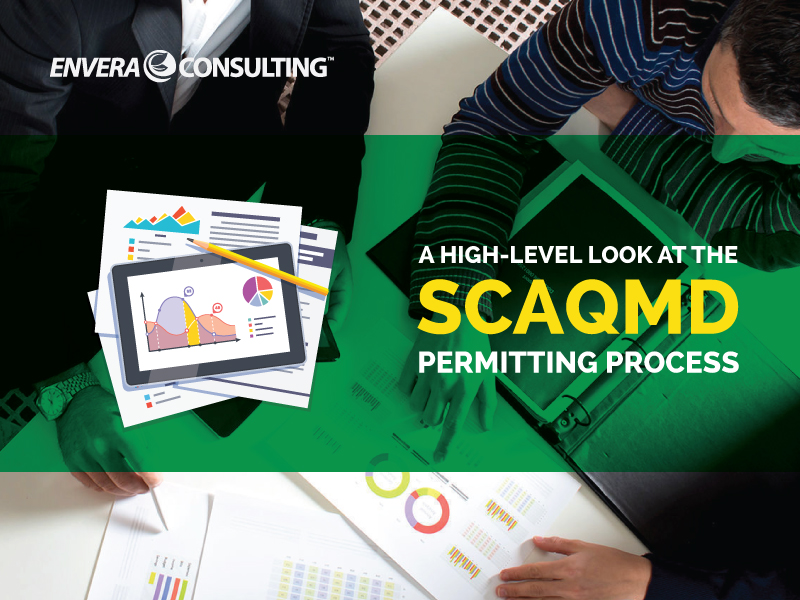

For many people, the SCAQMD’s permitting process is shrouded in mystery. Exactly how an application gets approved or rejected is unknown to almost everyone who applies. Since the agency isn’t going to create its own version of Schoolhouse Rock’s “I’m Just a Bill,” I’m hoping I can help shed a little light on the matter.
The goal of the SCAQMD permitting process is to ensure that the piece of equipment that you’re trying to permit can comply with all of its applicable rules and regulations. The permit application itself is merely a vehicle that transmits all the data necessary for the approving engineer to determine whether or not that piece of equipment can comply. That’s all it is.
Here’s a high-level picture of what the permitting process looks like:
1. Applicant Submits Application
I’ve reviewed the three components of a complete permit application many times, so we won’t go into detail here. But for review, here are those three very important pieces:
- Complete permitting forms
- Permit-processing fees
- Engineering evaluation
Now, I’ll be honest. I’ve seen cases — small miracles, really — where an applicant received a permit simply by submitting forms and fees. All that did was make it necessary for the engineer to track down the applicant for the information that should have been part of the engineering evaluation. So in the end, the applicant still needed to provide that info. Leaving it out just created a lot of back-and-forth between the applicant and the permitting engineer.
More likely than not though, leaving out the engineering evaluation will simply cause the entire application to be kicked back to you, thereby stalling your overall project. Plus, the agency can always reject the application for having insufficient info — or because you’re not cooperating.
So if you want your permit ASAP, you’d better be sure your application is as complete as possible.
2. Air District Performs Initial Review of Application
Once your application is with the SCAQMD, an engineer will do a rough pass to make sure it has all three components and the submitted fees are correct. If anything is amiss in the application, guess what — it’s coming right back to you for another pass. The engineer will tell you what’s missing — incorrect forms, inaccurate fees, etc. — and you’ll have to start back at square one. Do not pass Go. Do not collect $200.
And that cycle will repeat itself until the engineer has a complete application.
Note that it’s estimated that these engineers spend nearly 20 percent of their time hunting down missing information. That’s a lot of time to be spinning your wheels, so get on the agency’s good side and submit it properly the first time. You’ll make them happy and you’ll save yourself a boatload of headache.
3. Air District Begins Processing Application
If you’ve made it to this step, congratulations! You’ve submitted a complete air-permit application. The engineer now reviews all the data to make sure that your equipment or process can comply with all the agency’s rules and regulations.
4. Receive and Review Your Draft Permit
If the engineer determines that compliance is possible, you will receive a draft permit shortly after. This document contains equipment descriptions as well as the draft permit conditions that will pertain to the equipment.
It’s important that you review all of the permit conditions on the draft permit, as you’ll be required to comply with those conditions once the final permit is issued. If any of the conditions don’t sit well with you, don’t worry — you can negotiate. Really! (See Point #3 on our post “3 Best Practices for Permit Conditions.”)
5. Receive Final Permit
Once you and the agency have agreed to the conditions, the final permit is issued. You are now authorized to start construction or operation of your piece of equipment, as long as you do so in compliance with all of the permit conditions.
For more tips, refer to our handy-dandy list of “8 Essential Facts You Need to Know Once the SCAQMD Issues Your Air Permit.”